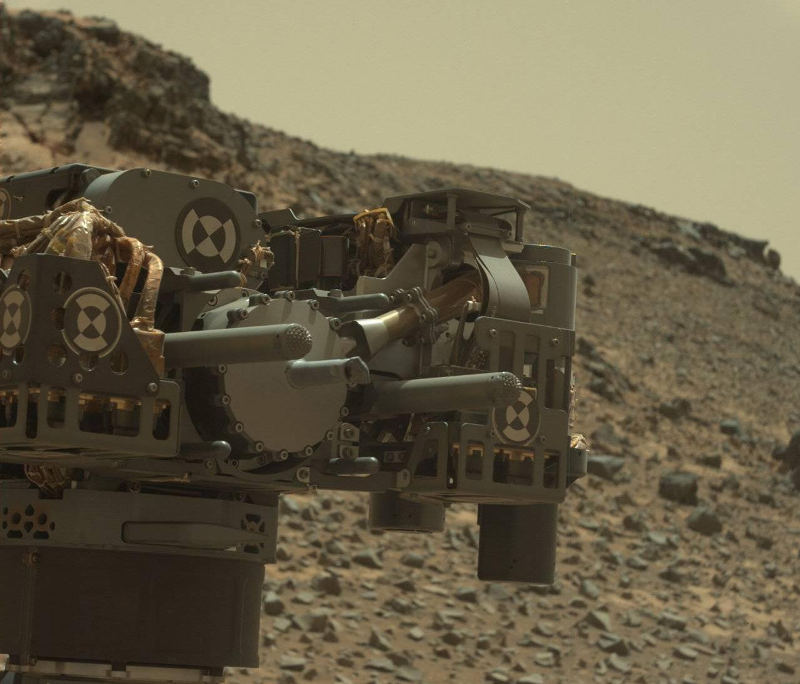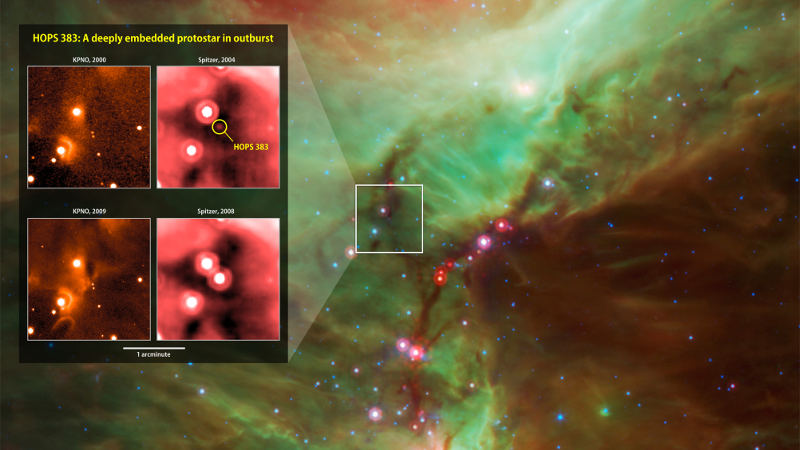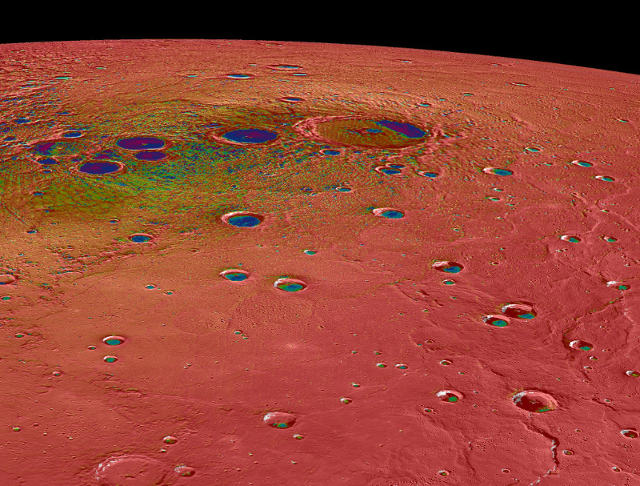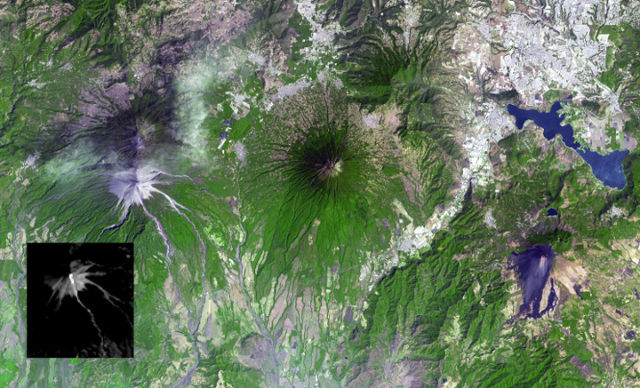
On its 908th day on Mars, the Curiosity rover used this drill to bore into a rock called “Telegraph Peak“. A glitch in the system triggered by an irregularity in electrical current lead to several troubleshooting tests and delays in transferring the drilled samples for analysis. This picture was taken by the Mast Camera mounted on Curiosity.



